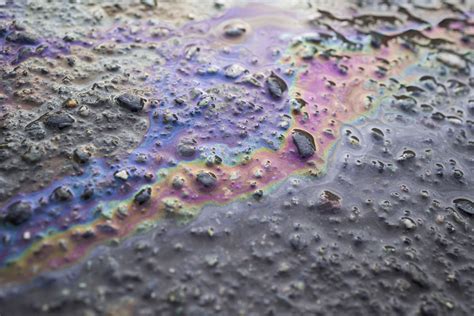How To Clean A Diesel Spill
Ronan Farrow
Mar 24, 2025 · 3 min read

Table of Contents
How to Clean a Diesel Spill: A Comprehensive Guide
Diesel spills can be a significant environmental hazard, posing risks to soil, water, and wildlife. Knowing how to clean up a diesel spill effectively and safely is crucial, whether it's a small leak from your vehicle or a larger incident. This guide provides a step-by-step approach to handling diesel spills of various sizes, focusing on safety and environmental responsibility.
Safety First: Protecting Yourself and the Environment
Before you even begin cleaning, prioritize safety. Diesel fuel is flammable and can be harmful if inhaled or absorbed through the skin. Always wear appropriate personal protective equipment (PPE):
- Gloves: Choose heavy-duty, chemical-resistant gloves. Nitrile or neoprene are good options.
- Eye protection: Safety glasses or goggles are essential to protect your eyes from splashes.
- Respiratory protection: A respirator with an organic vapor cartridge is recommended, especially for larger spills or in enclosed spaces.
- Protective clothing: Wear long sleeves, long pants, and closed-toe shoes to protect your skin.
Assessing the Spill: Size Matters
The cleaning method will depend on the size of the spill. Categorize it as follows:
Small Spills (less than a quart):
These can often be managed with readily available materials.
Medium Spills (a quart to a gallon):
Require more absorbent material and potentially specialized cleanup products.
Large Spills (more than a gallon):
Demand professional help. Contact your local emergency services or a hazardous waste cleanup company immediately. Do not attempt to handle this yourself.
Cleaning a Small Diesel Spill: A Step-by-Step Guide
-
Contain the spill: Use absorbent materials like kitty litter, sawdust, or commercially available spill pads to soak up the diesel fuel. Create a berm or dike around the spill to prevent further spreading.
-
Absorb the diesel: Gently apply the absorbent material to the spill, working from the outer edges inward. Allow the material to absorb the diesel completely. Avoid excessive rubbing, which can spread the spill further.
-
Collect and dispose: Once the absorbent material is saturated, carefully collect it in sealed bags. Dispose of the contaminated material properly. Contact your local waste management authority for guidance on proper disposal procedures. Diesel-soaked materials are considered hazardous waste.
-
Clean the affected area: After absorbing the diesel, clean the affected area with a detergent and water solution. Rinse thoroughly.
Cleaning a Medium Diesel Spill: Beyond DIY
Medium spills require a more systematic approach. While you may attempt some initial containment, specialized equipment and products may be needed. Consider these options:
- Absorbent booms and pads: These are designed to contain and absorb larger quantities of liquids.
- Spill kits: Commercially available spill kits often contain absorbent materials, gloves, and other necessary equipment.
- Vacuum systems: For collecting absorbed liquids.
When to Call a Professional
Always call for professional help with large spills or spills in sensitive environments (near waterways, wetlands, etc.). Professionals have the expertise, equipment, and permits to handle these situations safely and effectively. They'll also ensure proper disposal of hazardous waste, minimizing environmental impact.
Prevention is Key
Preventing diesel spills is paramount. Regular maintenance checks on your vehicle's fuel system, proper storage of diesel fuel, and employee training can significantly reduce the risk of spills.
This guide provides a general overview. Always refer to your local environmental regulations and seek professional advice when needed. Remember, safety and environmental responsibility are paramount when dealing with diesel spills.
Featured Posts
Also read the following articles
| Article Title | Date |
|---|---|
| How To File For Temporary Custody In Florida | Mar 24, 2025 |
| How To Grow Coralline Algae | Mar 24, 2025 |
| How To Delete Livejasmin Account | Mar 24, 2025 |
| How To Get Uconnect Navigation Free | Mar 24, 2025 |
| How To Clean Velvet Curtains | Mar 24, 2025 |
Latest Posts
-
How Long After A Cartilage Piercing Can You Swim
Apr 05, 2025
-
How Long After A Brow Lamination Can I Shower
Apr 05, 2025
-
How Late Is Too Late For A Date
Apr 05, 2025
-
How Late Can You Plant Sunflowers Zone 5
Apr 05, 2025
-
How Late Can You Overseed In The Fall
Apr 05, 2025
Thank you for visiting our website which covers about How To Clean A Diesel Spill . We hope the information provided has been useful to you. Feel free to contact us if you have any questions or need further assistance. See you next time and don't miss to bookmark.
